Book Reviews
Fiction
- All Fiction
- Adventure
- African American
- Chapter Books
- Chick Lit
- Christian
- Classics
- Contemporary
- Diversity
- Dystopian
- Erotica
- Fantasy
- Graphic Novels/Manga
- Historical
- Horror
- Humor
- LGBTQ
- Literature
- Medieval
- Mystery
- Mythology
- Native American
- Other Fiction
- Paranormal/Supernatural
- Picture Books
- Realistic
- Reluctant Readers
- Retold Fairytales
- Romance
- Science Fiction
- Short Stories
- Sports
- Thrillers/Suspense
- Time Travel
- Western
Nonfiction
Want to submit a book review? Submit your book review today.
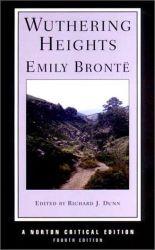
"Wuthering Heights" by Emily Bronte is a haunting tale of passion, revenge, and the destructive power of obsession. Set against the atmospheric backdrop of the Yorkshire moors, Bronte creates a narrative that delves deep into the complexities of human nature and the dark corners of the human psyche. Through the relationship between Heathcliff and Catherine, Bronte explores themes of social class, love, and the relentless cycle of vengeance. The novel's richly drawn characters and evocative prose create an immersive reading experience that lingers in the mind long after the final page. "Wuthering Heights" stands as a timeless classic of English literature, captivating readers with its raw emotion and portrayal of the human heart's capacity for both love and cruelty.
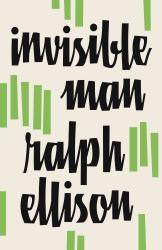
"Invisible Man" by Ralph Ellison is a profound exploration of identity, race, and society in mid-20th-century America. Ellison's masterful storytelling and vivid prose paint a gripping portrait of an unnamed African American protagonist navigating a world that refuses to see him as an individual. Through his journey, the protagonist grapples with the complexities of self-discovery and the nature of prejudice and invisibility. Ellison's exploration of themes such as the quest for recognition and the power dynamics inherent in society resonates with readers long after they turn the final page. "Invisible Man" is a timeless classic known for its insightful commentary on the human condition and the pursuit of identity in a world that often seeks to render individuals invisible.
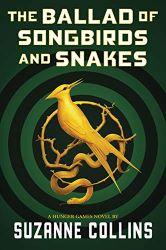
The Ballad of Songbirds and Snakes is a prequel to the first book The Hunger Games. This book shines a new light on how you see the overall world of the Hunger Games. The main protagonist in this book is Coriolanus Snow the ruler over the Capitol in the original Hunger Games. It was an odd spin on the book, but it works out perfectly. The number of characters from the original book that are in this book helps it feel more connected to the original series. It also shows how in this world the richest stay the richest and hardly anyone new climbs up the ranks to become wealthy and powerful. In The Ballad of Songbirds and Snakes, the Hunger Games are also viewed a different way. It is viewed as a way of power over the districts, so they don't have any of the tributes perform, unlike the 74th Hunger Games. I picked this book because I wanted to know what happened before the original Hunger Games. I enjoyed the world-building the most in this book. This book surprised me quite a bit because I didn't think I would like it as much as I did. This is definitely one of my favorite books I've read this year.
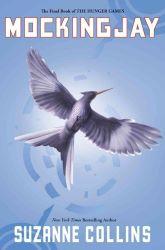
Mockingjay is the third book in The Hunger Games series. After the events of the 75th Hunger Games District 12 was destroyed, leading to even more uprisings across the districts. In the book Katniss and her allies try to recruit districts to their cause with the help of the newly rediscovered District 13. After everything is planned out the districts start an all-out war with the capitol. With both sides fighting fiercely, it could go any way. I chose to review this book because it is the 3rd book in The Hunger Games series. I enjoyed the war between the Capitol and the Districts the most in this book. This book is fairly predictable. I could relate to Katniss Everdeen in this book because she stands up for what's right even if it's not the easiest route to take like I do.
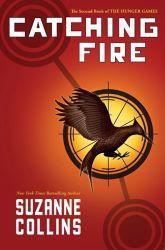
The Hunger Games Catching Fire is a sequel to the first book in the series The Hunger Games. The book takes place after the 74th Hunger Games where Katniss Everdeen and Peeta Mellark from District Twelve unexpectedly won the Hunger Games. Katniss, Peeta, and their loved ones were far from safe even after The Hunger Games due to their defiance against the Capitol. The districts were starting to rebel against the Capitol because of what happened in the 74th Hunger Games. President Snow (the leader of the Capitol) forces Katniss and Peetah to make the districts as well as himself believe that they weren't trying to defy the Capitol. After several failed attempts to calm the districts down President Snow took action when the Third Quarter Quell (75th Hunger Games) took place. I picked this book because it is a prequel to The Hunger Games. I enjoyed getting to know the aftermath of the 74th Hunger Games the most. My least favorite part of the book is how they handled The Hunger Games. I didn't feel like it was nearly as intense or interesting as the 74th Hunger Games. This book is also fairly predictable. I could relate to Katniss Everdeen in this book because she didn't know her allies from her enemies in the book, and I'm not too good at reading people in real life. This isn't one of my favorite books but it's definitely a solid book.
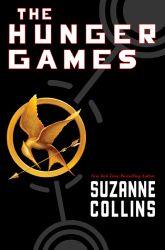
The Hunger Games is set in a dystopian world where the Capitol controls 12 districts. Every year each district is required to send in 2 tributes to compete in the Hunger Games. One female and one male between the ages of 12-18 are drawn at random to compete in the hunger games. The Hunger Games takes place in an arena where all tributes fight to the death until one tribute is last standing and crowned the winner. Tributes can also earn an advantage over other tributes before the games even begin by becoming liked by the general audience of the Hunger Games. If the audience likes a tribute in the Hunger Games, they are more likely to get a sponsor to send them supplies while they are in the arena. I read this book because of the dystopian genre. I enjoyed reading about the tributes in the arena the most in this book. This book is fairly predictable but that doesn't make it any less good to read. This is probably my favorite book of all time.
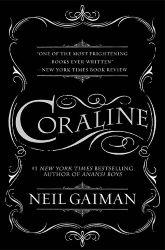
This book is about a young girl named Coraline. When Coraline moves into her new house, she finds a weird door in her house that is supposedly bricked off. Later she revisits the door to find out that the bricks are randomly gone. She goes through the door which leads her to an alternate life where everything seems creepily perfect. Everything seems much better in the other world. One weird detail is that everyone in the other world, except for Coraline has button eyes. Is the other world as good as it seems? I picked this book because of the genre. I enjoyed how creative and creepy the book was the most. This book surprised me when I found out about what the other world was. This is one of the best books I've read this year and recommend it.
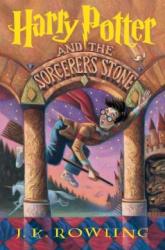
At the start of the book, we are introduced to the character Harry Potter. Harry Potter was an orphan who was adopted by an abusive family. We soon discover that Harry Potter is a wizard and is invited to a school for wizards like himself called Hogwarts. During Harry's time at Hogwarts, he learned more about magic and befriended some of the students attending the school. Throughout Harry's time at Hogwarts, he finds out more about how his biological parents died. I picked this book because it is extremely popular, and I've heard a lot of good things about the book. I enjoyed the world-building the most from this book. This book was fairly predictable for me because I've already seen the movies. This is definitely one of the best books I've read this year.
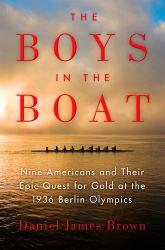
If you love books about the true American spirit, you must read Daniel James Brown's narrative-nonfiction book The Boys in the Boat. The book follows the life of Joe Rantz who was abandoned by his family during The Great Depression. It follows his journey as a teen going to the University of Washington and becoming a member of the 1936 Olympic rowing crew that won the gold medal for America. They were boys from working-class backgrounds who beat the odds and beat the very elite team of Adolf Hitler. The book is immersed in intriguing details of Joe’s life. This can be attributed to the fact that Brown was able to interview Joe in his frail, elderly years. He spent many hours listening to Joe’s daughter tell stories of her father’s experiences. Brown was also able to acquire diaries and photos from the boys on the rowing crew. Joe Rantz was very hard-working and optimistic. My favorite quote showing his optimism was: “The only time you don't find a four-leaf clover is when you stop looking for one.” The book is an irresistible account of teamwork, overcoming pain, trusting in others, endurance, and driving spirit. I chose this book because I like other books that this Author made. What I enjoyed about this book the most is how inspirational it is to the readers. It shows you can accomplish what you set out to do if you work hard at it. There isn’t a part of the book I enjoyed the least. I can relate to Joe Rantz because I work hard to achieve my goals just like he did. This is a good book and I recommend a readthrough.

“The Man Who Went to the Far Side of the Moon” is one of the most interesting books ever written! Bea Uusma Schyffert’s unique scrapbook style presents the story of Michael Collins, the Apollo 11 astronaut who faithfully piloted the spacecraft as his two teammates became the first men on the moon. Perfectly capturing every thought and detail through pictures, infographics, and prose, “The Man Who Went to the Far Side of the Moon” pulls the reader into the story and lets them see it through Collins’ eyes. It even includes notes written by Collins himself. This is by far the best account of the forgotten hero in the history of astronomy.
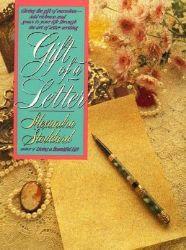
Looking to get into letter writing? Alexandra Stoddard’s introductory book “Gift of a Letter” explains all the ins and outs of what it takes to write a letter. A sincere tribute to the etiquette of pure expression, “Gift of a Letter” contains two books in one. It is both a biography and an instruction manual working for the same purpose: to uncover and share the lost art of letter writing. Though appearing somewhat dry and monotonous, this book delivers a eye-opening (and envelope-opening) message: writing is from the heart.
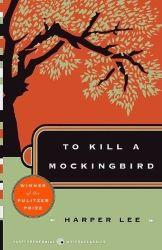
Harper Lee wrote the award-winning novel, To Kill a Mockingbird, in the 1960s. This was a time when her home state of Alabama was embroiled in many civil rights activities to counteract the inconceivable practice of segregation. It is so fascinating that Lee placed the setting of her book in the 1930s during The Great Depression. The story is narrated by a young girl named Scout Finch who lives with her father Atticus, her brother Jem, and their black housekeeper named Calpurnia. She uses these characters and many others to weave together a coming-of-age story and a story of racism. Scout witnesses the biased treatment of African- Americans when her father defends a black man, Tom Robinson, who is accused of beating and raping a white woman. Atticus teaches Scout and Jem so many lessons about prejudice, compassion, and tolerance. My favorite quote in the book is: “You never really understand a person until you consider things from his point of view…until you climb into his skin and walk around in it.” I highly recommend this book as its lessons will never be outdated.
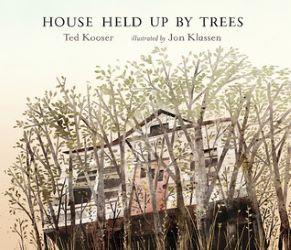
The book is about a man who lives in a house that keeps his porch and lawn tidy. The man's children used to play in the woods next to the house. When the man's children grow up, he abandons the house. The trees and nature that the man had been battling years ago have taken over the property. The trees eventually lift the house off the ground, keeping the house held up by trees. This book also dives deep into the theme man vs nature very well.
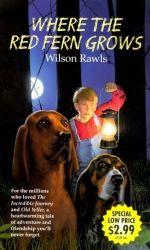
Where The Red Fern Grows is a book about a kid named Billy hunting raccoons with his two hounds. At the start of the book, Billy does a lot of work to save up for the money to buy two coonhounds. When he finally saves up enough money, he goes into the city to buy the two hounds which he names Little Ann and Old Dan. When Billy gets back to his home, he trains the dogs. During training, Billy realizes Dan is brave while Ann is smart. The book features several great adventures and a heartbreaking ending.
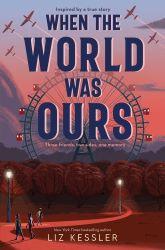
Liz Kessler takes an experience her father tells her about when she was a child and writes a powerful and heartbreaking book When the World Was Ours. The book is set in the late 1930s. The book captivates the reader as Kessler starts the story in Vienna with Elsa, Leo, and Max who are the best of friends. Elsa and Leo are Jews. Max is not a Jew. Leo believes that nothing could ever come between the joyful trio. Of course, something does! The Nazis come! The friends will be separated by the decisions their parents make. The reader will empathize with the humiliating and inhuman experiences the children endure. My favorite quote from the book is: “We’re just Jewish…you won't catch it!” I could not put this book down as I was so engaged in the characters and where their lives took them. Did the friends ever find each other again? Did they even want to?

Miracles from Heaven is a deeply moving recount of Annabel Beam's healing from pseudo-obstruction mobility disorder and antral hypo motility disorder. This diagnosis is an obstruction of the GI system, which makes it impossible for food and fluid to move through the stomach and intestines.
After being diagnosed at six years old, she began a variety of different medications which left her with little energy and no quality of life. Annabel loved climbing trees, but she was unaware that one of them would cause a miracle that changed her entire life.
This book was highly intriguing because near-death experiences (NDEs) have always fascinated me. This book lifted my spirit and encouraged me to always have hope in every situation.
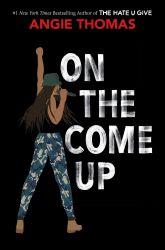
Angie Thomas brings readers inside the life of 16-year-old Bri Jackson who lives in Garden Heights. Bri's father, Lawless, was murdered when she was four. Although they had limited time together, people refer to her as "Lil Law" and she is determined to follow in his footsteps as a rapper to continue his legacy. She eventually receives her big break when she releases a song called "On the Come Up" which she wrote after being wrongfully and aggressively searched by her school security guards. While many people supported this song, those close to her disapproved because Bri was acting out of character and discussing violence she's never taken part in. Readers witness Bri's dilemma on whether to stay true to herself or conform to what others want her to become. I thoroughly enjoyed reading this story because Bri is extremely honest about her feelings and is morally intact. Reading about her dad strikes up many emotions and makes me feel more connected to her character. Bri is also passionate about those she cares about which makes it easy to root for her when she faces adversaries. I recommend this book to middle and high school students, especially women.
Reviewer: Grade 12
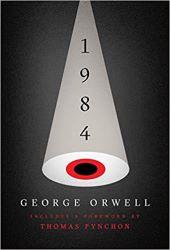
1984 is based in London, where the protagonist, Winston Smith, resides. In this dystopian society, a figure named "Big Brother" controls The Party, and watches every move citizens make. Everything in this nation is under heavy restriction to ensure Big Brother remains in control. This includes language, history, and even thoughts. Winston finds himself committing "thoughtcrime": having negative feelings and thoughts against "Big Brother", which is an extremely high offense in this nation. I enjoyed reading this novel because it includes intense moments that made my heart race, as well as many thought-provoking phrases that initiated reflection. This is the type of book that requires multiple reads to fully understand. I look forward to my second readthrough to experience the suspense again and catch new messages Orwell implemented. If you are into dystopian novels and conspiracy theories, I highly recommend this book, you won't regret reading it!
Reviewer: Grade 12
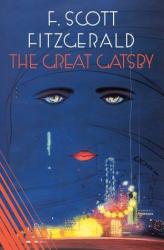
Set in 1992, The Great Gatsby encapsulates themes of wealth and society as readers experience the life of Nick Carraway, a man who recently moved to Long Island. He eventually befriends Jay Gatsby, a man known for his money and extravagant parties. As they grow closer, Nick quickly discovers more depth to Gatsby than meets the eye when Jay becomes vulnerable with Nick and exposes the reason behind his lavishness and expenses. This novel is known for its ability to distinguish new money and old money, explore "The American Dream", and expose how shallow and vain humans can be. I enjoyed following Nick's life, as he is a relatable character who reacts to this nonsense like many readers would. He acts as the voice of reason while those around him have significant flaws and characteristics that represent different aspects of society. I believe this book appeals to everyone in one way or another.
Reviewer: Grade 12
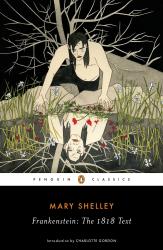
Frankenstein is a classic novel that recollects the events after Victor Frankenstein, a knowledgeable and curious scientist, gives life to a haunting creature. As soon as this monster opens its eyes, Victor becomes filled with regret. Although the monster fled from Victor's apartment, it wasn't the last time they would interact. Readers witness Frankenstein's sickening and terrifying journey as he searches for his monster. I believe this novel did an amazing job of expressing the valid feelings of the monster while also displaying Victor's feelings and emotions. Some chapters in the story tend to drag and there are events that Mary could have elaborated on to provide readers a clearer image of each occurrence. But overall, this was a unique approach to expressing themes of isolation, vanity, cruelty, and fear.
Reviewer: Grade 12
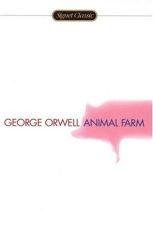
Orwell wrote this book to examine the early years of the Soviet Union and the real result of the Russian Revolution. He uses Manor Farm as the setting and uses the farm animals as characters to convince the reader how the leaders of a country could put in place a system that would not be the utopia they promise. These promises may turn out to create a situation much worse than existed before. Orwell wanted a farm where “All Animals Are Equal.” Unfortunately, “Some Are More Equal Than Others.” The reader will recognize some of the characters as representing historical figures such as Stalin, Marx, Lenin, and Trotsky. If you are interested in economic and political systems and how they impact the citizens, you will not be able to put this book down! Animal Farm is one of my favorite books.
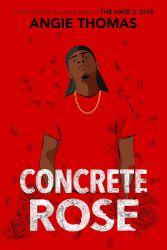
Concrete Rose tells the story of 17-year-old Maverick Carter who is a member of a gang, the King Lords, in Garden Heights. Maverick's life was going smoothly until one day when he found out he was going to become a teen father. This book takes readers through the journey of Maverick trying to balance his fatherhood, social life, and gang activity all at once. Angie Thomas does a beautiful job of describing the difficulties of parenthood and the devastation of gang violence while still entertaining her readers and making us feel a connection to the characters. Concrete Rose has become one of my favorite stories because it sparks emotional responses throughout the entire book and feels extremely authentic to the issues discussed. This story is also a prequel to Angie Thomas's best-selling book, The Hate U Give, as Maverick is the father of Starr, the main character of T.H.U.G. It's riveting to see Maverick's story and how he becomes the man he needed to be in order to raise his daughter.

"Restore Me" by Tahereh Mafi is a breathtaking continuation of the Shatter Me series, deserving a perfect 5 out of 5 stars. Mafi's prose is as mesmerizing as ever, drawing readers into Juliette's tumultuous world with its vivid imagery and emotional depth. The character development is superb, as Juliette grapples with the weight of her newfound power and the responsibilities that come with it. The dynamic between Juliette and Warner crackles with intensity, adding a layer of complexity to their relationship that is both compelling and heart-wrenching. Mafi expertly balances action and introspection, keeping readers on the edge of their seats while delving into the inner workings of her characters' minds. The plot twists and turns with unpredictable ferocity, culminating in a jaw-dropping cliffhanger that will leave readers clamoring for more. "Restore Me" is a masterful addition to the series, showcasing Mafi's talent for storytelling and cementing her status as a powerhouse in the YA genre.
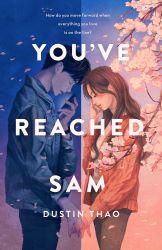
"You've Reached Sam" by Dustin Thao is a heart-wrenching contemporary romance that earns a solid 4 out of 5 stars from me. Thao's writing is emotionally resonant, capturing the complexities of grief and healing with sensitivity and depth. The protagonist, Julie, navigates the aftermath of losing her boyfriend, Sam, with authenticity and grace, allowing readers to empathize with her journey of self-discovery. Thao's exploration of love and loss is both profound and thought-provoking, reminding us of the fragility of life and the importance of cherishing every moment. The themes of forgiveness and letting go are woven seamlessly into the narrative, adding layers of emotional depth to the story. The pacing is steady, immersing readers in Julie's world as she grapples with her grief and finds solace in unexpected places. Overall, "You've Reached Sam" is a beautifully written debut novel that will tug at your heartstrings and linger in your thoughts long after you've finished reading.
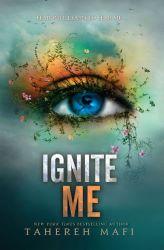
"Ignite Me" by Tahereh Mafi is an electrifying conclusion to the Shatter Me series, earning a well-deserved 5 out of 5 stars. Mafi's poetic prose and raw emotion ignite the pages, drawing readers into the tumultuous world of Juliette Ferrars. The character development is exceptional, as Juliette evolves from a fragile girl into a fierce and empowered leader. The chemistry between Juliette and Warner sizzles with intensity, adding an extra layer of tension to the narrative. Mafi's exploration of power, identity, and love is profound, resonating long after the final page is turned. The action-packed plot is relentless, keeping readers on the edge of their seats with each twist and turn. Overall, "Ignite Me" is a breathtaking conclusion that will leave fans of the series completely satisfied.
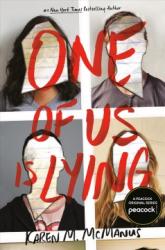
"One of Us Is Lying" by Karen M. McManus is an addictive blend of suspense, secrets, and teenage drama. McManus crafts a gripping narrative filled with twists and turns that kept me hooked from start to finish. The characters are multi-dimensional, each with their own motivations and secrets, making it impossible to trust anyone completely. The story unfolds through multiple perspectives, allowing for a deeper exploration of each character's psyche and adding layers of complexity to the mystery. McManus's writing is sharp and atmospheric, creating a palpable sense of tension that lingers throughout the novel. As the plot unravels, the stakes escalate, leading to a thrilling conclusion that will leave readers on the edge of their seats. "One of Us Is Lying" is a must-read for fans of suspenseful thrillers with a compelling cast of characters.
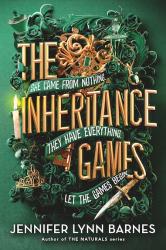
"The Inheritance Games" by Jennifer Lynn Barnes is a captivating rollercoaster of mystery and intrigue. Barnes masterfully weaves together a tangled web of secrets, puzzles, and unexpected twists that kept me guessing until the very end. The protagonist, Avery Kylie Grambs, is a complex character whose journey from obscurity to inheriting a billionaire's fortune is both thrilling and thought-provoking. The dynamic between Avery and the Hawthorne family is filled with tension and suspicion, adding layers of depth to the plot. Barnes's writing style is engaging, with vivid descriptions and sharp dialogue that bring the story to life. The pacing is brisk, ensuring that there's never a dull moment as Avery navigates the treacherous waters of the Hawthorne estate. Overall, "The Inheritance Games" is a gripping read that will leave you eagerly anticipating the next installment in this thrilling series.
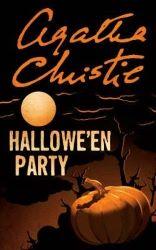
Agatha Christie is an author you can rarely go wrong with, and Hallowe'en Party is no exception. The book is another Hercule Poirot mystery. In this one, his friend Ariadne Oliver attends a Halloween party where a girl named Joyce claims that she once saw a murder. Later in the night the girl is found drowned in the barrel of apples.
The characters are fairly standard, though they're fairly entertaining. The dynamic between Mrs. Oliver and Poirot is particularly charming. The dead characters and the eventual murderer are also given some degree of depth. Other than that, the characters are serviceable but shallow.
The plot mostly consists of Poirot speaking to the various suspects and witnesses. It drags a bit at points, but quickly picks up. The twists are all well built up, and nothing feels like it comes out of nowhere. All the pieces fall together in a satisfying way.
This book is also sold as "A Haunting in Venice". This is because the new Hercule Poirot movie is loosely based on this story. However, the key word is loosely. So, if you watched the movie first, be aware that these two stories have almost nothing in common (aside from the main character).
I would recommend this book to fans of Agatha Christie and mystery fans in general.
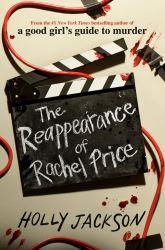
The Reappearance of Rachel Price tells the story of Bel Price, whose mother has gone missing when she was two, and her family life. In the story, Bel’s family agrees to a documentary about Rachel’s disappearance, only then Rachel unexpectedly shows up. With cameras still rolling, Bel tries to figure out the truth of Rachel’s disappearance and uncovers many buried family secrets on the way, leading her to doubt who she should trust: her “dead” mother, or the family she knew her whole life.
I found this book enjoyable because I love all of Holly Jackson’s novels, and the plot twist in this one truly blew me away! However, it took a little while for things to start happening in the book and it kinda felt like I was forcing myself to read. But when things did start happening, the story really took shape and was a wild book to read! I especially loved Bel’s character development. She wasn’t a very likeable character as she pushes people away and is just a general rude person. But as she continues to grow, her character gets so much better and I love how Jackson incorporated that into the mystery!
“The Zoo on the Mountain” is an inspiring historical tale of The Cheyenne Mountain Zoo. This book follows the famous Coloradoan zoo and its owners through the highs and lows of its existence. Starting with Spencer Penrose’s first bear and carrying through the disastrous flood from the mountain above, the impeccably accurate accounts of this book portray the humble mountain zoo in its true light. “The Zoo on the Mountain” is a interesting and mentally moving piece of literature. It’s a zooful of knowledge!